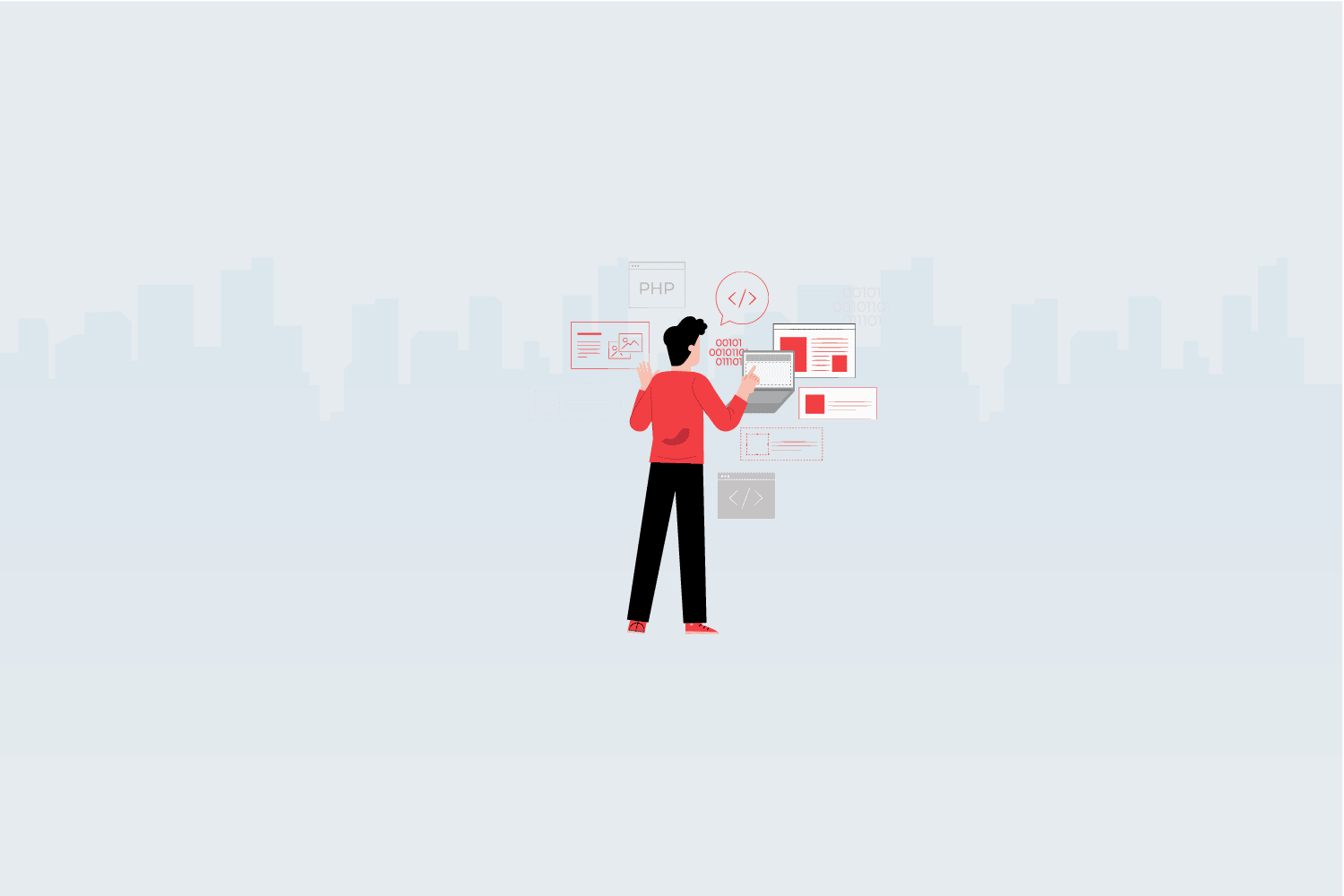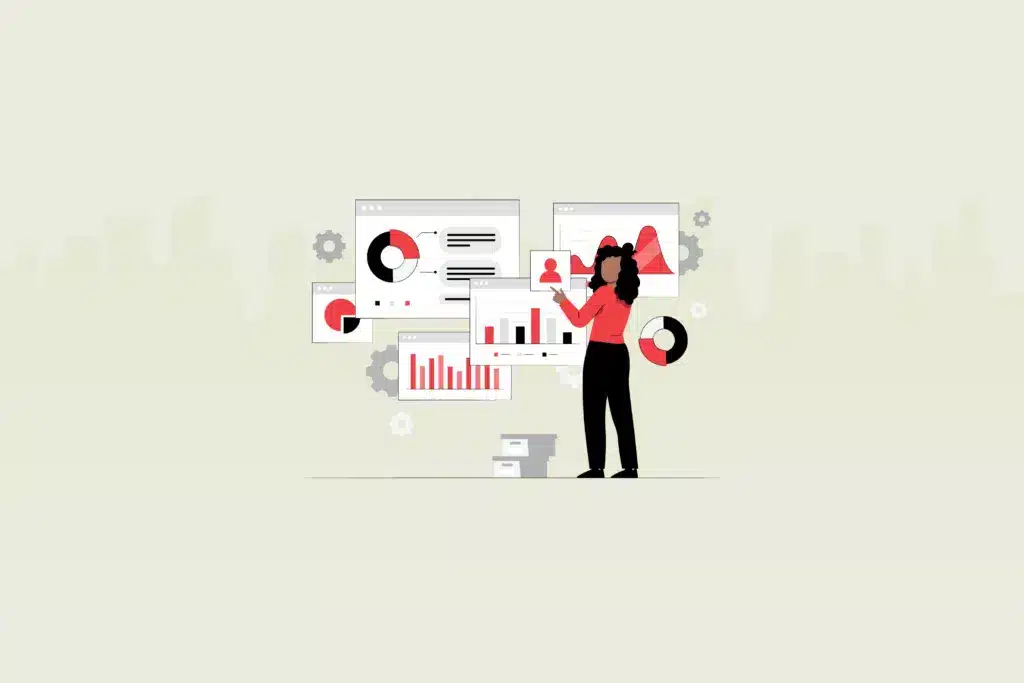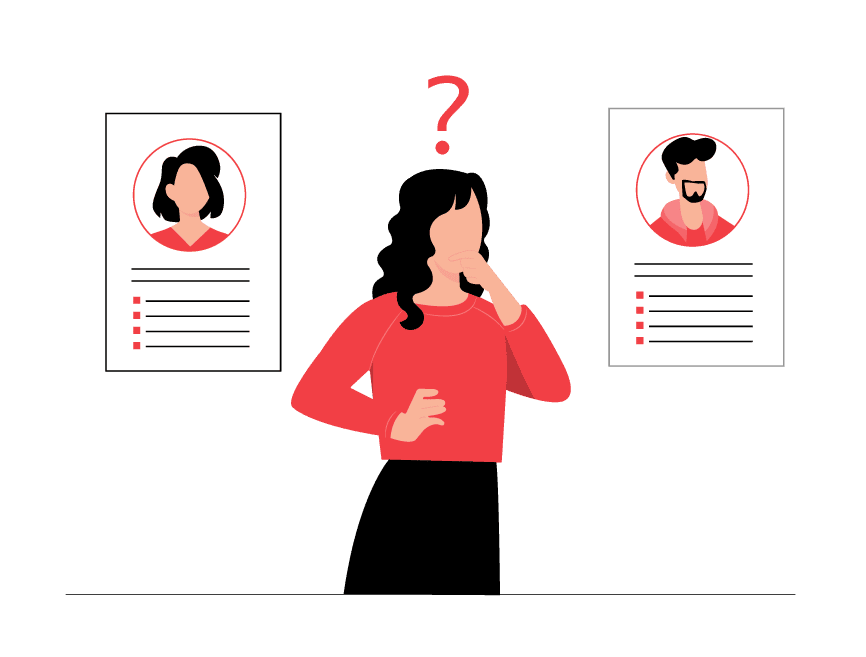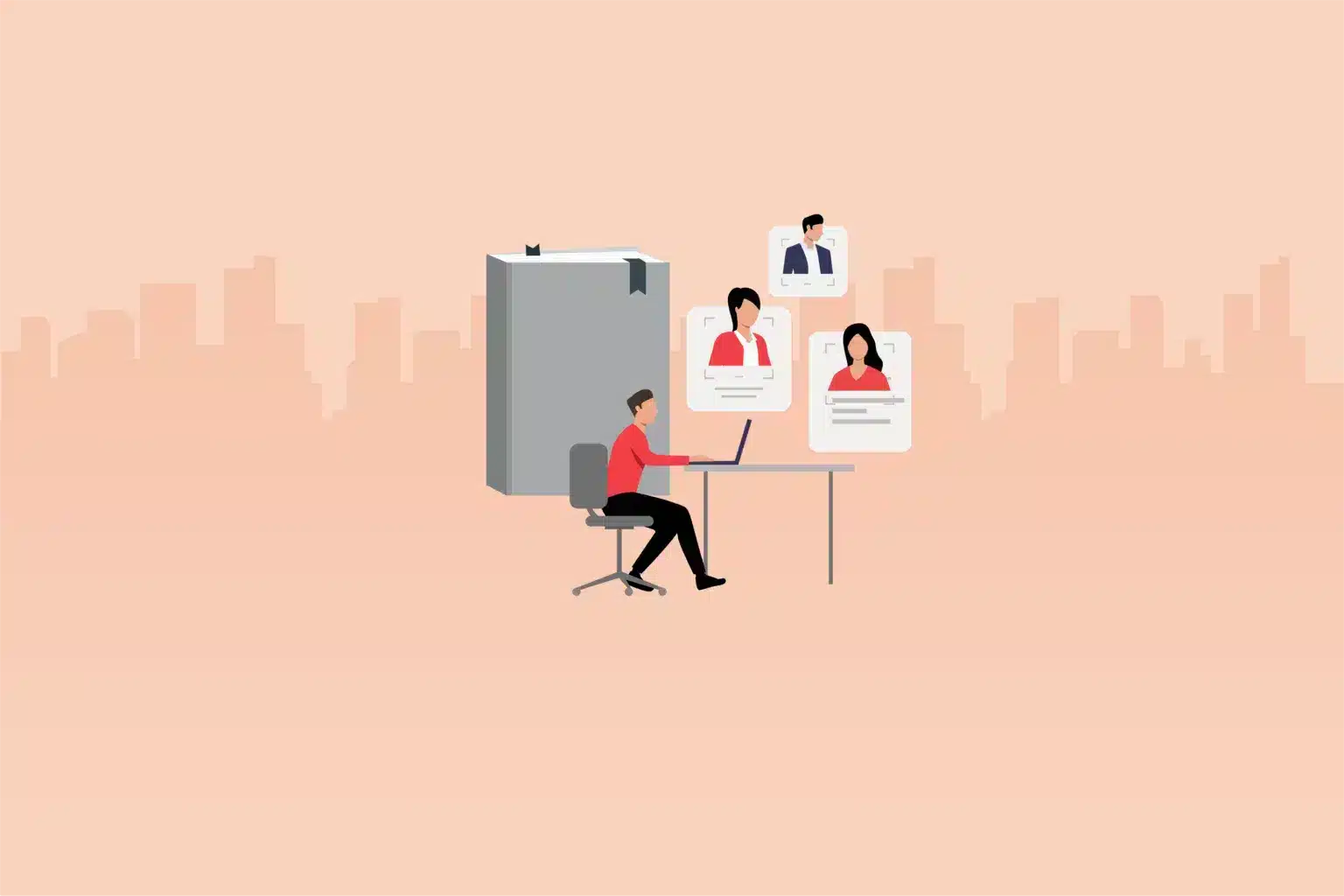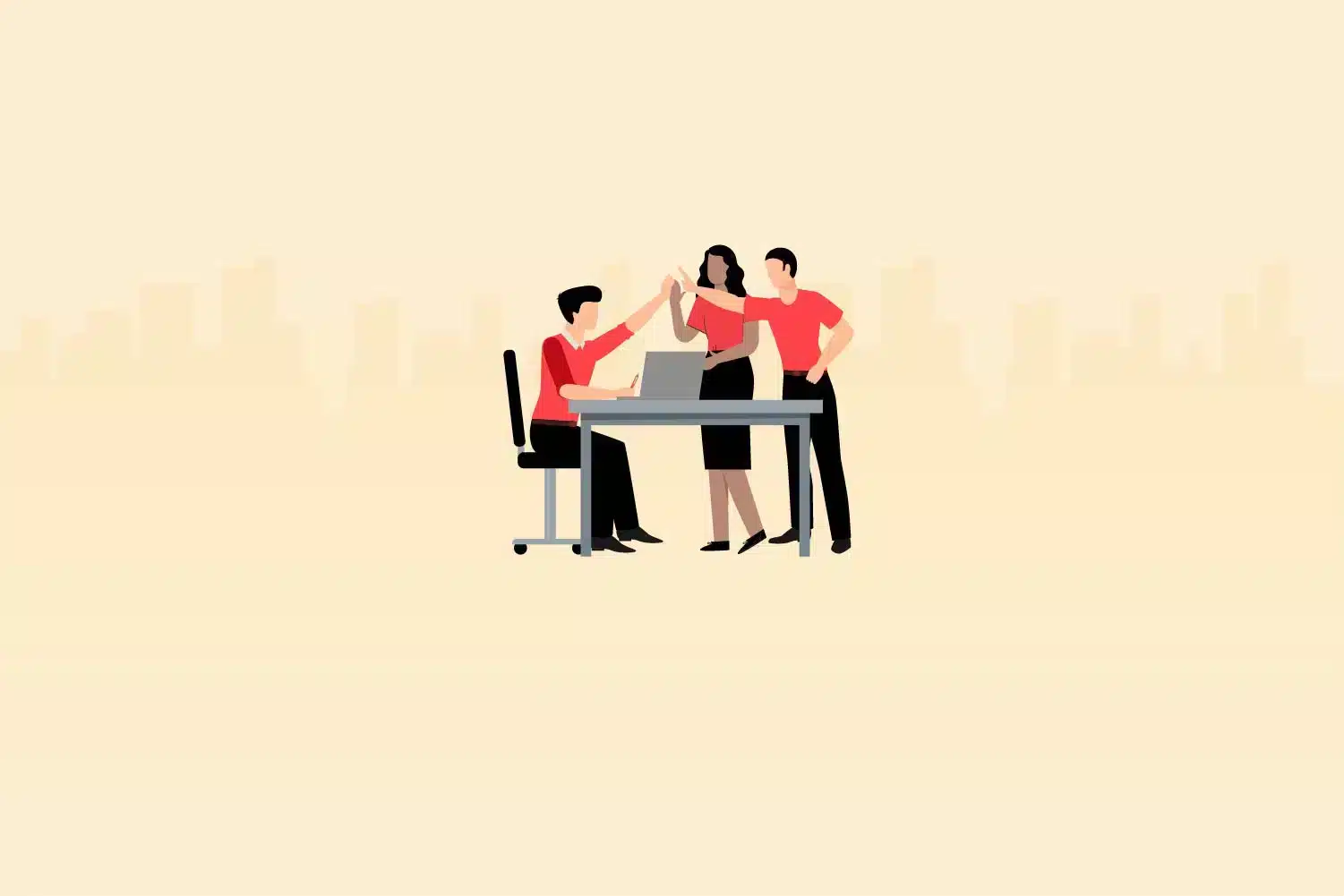In today’s dynamic business landscape, the role of a Benefits Analyst has become increasingly crucial. As companies strive to attract and retain top talent, the demand for skilled professionals who can design and administer comprehensive employee benefits programs has surged. The recruitment trends in this field reflect the growing recognition of the vital role benefits play in employee satisfaction, engagement, and overall organizational success.
Analytics-driven insights now play a key role in the decision-making process, enabling Benefits Analysts to optimize benefits packages that align with both employee needs and business objectives. As HR professionals and CXOs navigate the complexities of the modern workforce, understanding the evolving landscape of Benefits Analysts is vital to ensuring the attraction and retention of top talent.
Here are the top 60 Benefits Analyst interview questions to ask job applicants:
15 general interview questions for the Benefits Analyst
- Can you explain your experience in designing and administering employee benefits programs?
- How do you stay updated with current industry trends and regulatory changes related to benefits?
- Can you provide an example of a benefits program you developed that successfully increased employee engagement and satisfaction?
- How do you approach analyzing data and conducting cost-benefit analyses when designing benefit packages?
- What strategies do you employ to ensure compliance with relevant laws and regulations while designing benefits programs?
- How do you assess the effectiveness of existing benefits programs and make recommendations for improvements?
- Can you describe a situation where you had to balance employee needs and organizational budget constraints when designing benefits?
- How do you communicate complex benefit programs to employees, ensuring they understand the value and utilization of the offerings?
- Can you discuss your experience in managing open enrollment processes and coordinating with vendors and third-party administrators?
- How do you handle employee inquiries and concerns related to benefits in a timely and effective manner?
- Can you share an example of a challenging benefits-related issue you resolved, highlighting your problem-solving skills?
- How do you ensure confidentiality and data security when handling sensitive employee benefits information?
- Can you discuss your experience in conducting market research to benchmark benefits offerings against industry standards and competitors?
- How do you collaborate with cross-functional teams, such as HR, finance, and legal, to ensure seamless integration of benefits programs?
- Can you explain your approach to measuring the ROI (Return on Investment) of benefits programs and using data to drive decision-making?
5 sample answers to general interview questions for the Benefits Analyst
- Can you explain your experience in designing and administering employee benefits programs?
Look for: The candidate should showcase their experience in creating and managing benefits programs, including their knowledge of different benefit options, regulatory compliance, and considerations for employee satisfaction.
Sample answer: “In my previous role as a Benefits Analyst at XYZ Company, I was responsible for designing and administering comprehensive employee benefits programs. This involved conducting market research to understand industry standards and employee preferences, analyzing data to identify cost-effective benefit options, and collaborating with cross-functional teams to ensure compliance with regulatory requirements. For example, I successfully implemented a new wellness program that included fitness incentives, leading to a 20% increase in employee engagement and a decrease in healthcare costs.”
- How do you approach analyzing data and conducting cost-benefit analyses when designing benefit packages?
Look for: The candidate should demonstrate their analytical skills, ability to use data effectively, and understanding of cost-benefit analysis in relation to benefits program design.
Sample answer: “When analyzing data and conducting cost-benefit analyses for benefit package design, I follow a systematic approach. I collect relevant data on employee demographics, utilization rates, and costs, and then use statistical techniques to identify trends and patterns. For instance, in my previous role, I conducted a cost-benefit analysis for introducing a flexible work arrangement program. By comparing the potential productivity gains and cost savings with the associated implementation costs, I was able to present a compelling business case to senior management, resulting in the successful implementation of the program.”
- How do you ensure compliance with relevant laws and regulations while designing benefits programs?
Look for: The candidate should demonstrate their knowledge of legal and regulatory requirements related to benefits programs and their ability to incorporate them into the design and administration processes.
Sample answer: “Compliance with laws and regulations is of utmost importance in designing benefits programs. I stay updated with changes in legislation and ensure that our programs align with the relevant legal requirements. In my previous role, I collaborated closely with our legal and compliance teams to conduct regular audits of our benefits programs. For instance, I reviewed plan documents, summary plan descriptions, and required notices to ensure accuracy and compliance with ERISA, HIPAA, and other applicable regulations.”
- Can you discuss your experience in managing open enrollment processes and coordinating with vendors and third-party administrators?
Look for: The candidate should showcase their experience in handling open enrollment processes, their ability to coordinate with external partners, and their attention to detail in managing benefits administration.
Sample answer: “In my previous role, I was responsible for managing the open enrollment process and coordinating with vendors and third-party administrators. I developed comprehensive communication plans to inform employees about enrollment timelines, benefit options, and any changes in plan offerings. Additionally, I worked closely with our benefits vendors to ensure accurate data transfer, resolve any enrollment issues promptly, and provide a seamless experience for our employees. For example, during the last open enrollment period, I implemented an online enrollment system that reduced errors by 30% and streamlined the benefits administration process.”
- How do you handle employee inquiries and concerns related to benefits in a timely and effective manner?
Look for: The candidate should demonstrate strong communication and customer service skills, as well as their ability to handle employee inquiries and concerns promptly and effectively.
Sample answer: “I prioritize timely and effective communication when handling employee inquiries and concerns related to benefits. I actively listen to employees’ questions and concerns, ensuring that I understand their needs and address them promptly. In my previous role, I established a dedicated benefits helpdesk where employees could reach out for assistance. I also developed a comprehensive FAQ document and conducted regular employee education sessions to proactively address common questions. By implementing these measures, I was able to reduce response times by 50% and improve employee satisfaction with the benefits program.”
15 behavioral interview questions for a Benefits Analyst
- Tell me about a time when you had to design a benefits program to address a specific employee need or challenge. How did you approach it, and what was the outcome?
- Describe a situation where you had to navigate through complex benefit regulations or compliance issues. How did you ensure compliance while still meeting the organization’s objectives?
- Can you share an example of a time when you had to balance conflicting priorities or requests from different stakeholders when designing a benefits program? How did you handle it?
- Describe a situation where you had to analyze data related to employee benefits to identify trends or areas for improvement. What actions did you take based on your analysis, and what were the results?
- Tell me about a time when you successfully managed a challenging open enrollment process. How did you ensure a smooth experience for employees while effectively communicating important information?
- Describe a situation where you had to handle a difficult benefits-related inquiry or complaint from an employee. How did you handle it, and what was the outcome?
- Can you give an example of a time when you had to negotiate with benefits vendors or third-party administrators to ensure the best possible offerings for employees?
- Describe a project where you collaborated with cross-functional teams (such as HR, finance, or legal) to implement a new benefits program. How did you ensure effective collaboration and successful implementation?
- Tell me about a time when you had to evaluate the effectiveness of an existing benefits program. How did you identify areas for improvement, and what actions did you take to enhance the program?
- Describe a situation where you had to handle a benefits-related emergency or crisis. How did you respond, and what measures did you take to mitigate the impact?
- Can you share an example of a time when you had to communicate complex benefits information to employees in a clear and understandable manner? How did you ensure they grasped the value and usage of the benefits?
- Tell me about a time when you had to make a recommendation for changes to a benefits program based on employee feedback or surveys. How did you gather the feedback, and what steps did you take to implement the changes?
- Describe a situation where you had to work with a limited budget while designing a benefits program. How did you make decisions to optimize the program within the budget constraints?
- Can you give an example of a time when you had to adapt to changing benefit regulations or industry trends? How did you stay updated, and how did you adjust your approach?
- Tell me about a project where you successfully utilized data analytics to inform your decision-making and design of benefits programs. How did you analyze the data, and what insights did you gain?
5 sample answers to behavioral interview questions for the Benefits Analyst
- Tell me about a time when you had to design a benefits program to address a specific employee need or challenge. How did you approach it, and what was the outcome?
Look for: The candidate should demonstrate their ability to identify and address employee needs, their creativity in designing solutions, and the positive impact their program had on employees.
Sample answer: “In my previous role, our employees expressed a need for better work-life balance options. I conducted surveys and held focus group discussions to gather insights and understand their preferences. Based on the feedback, I developed a flexible work arrangement program that included options for remote work and flexible scheduling. I collaborated with HR and legal teams to ensure compliance with labor laws and developed clear guidelines for employees and managers. The program was successfully implemented, resulting in a 25% increase in employee satisfaction and a noticeable improvement in productivity.”
- Describe a situation where you had to navigate through complex benefit regulations or compliance issues. How did you ensure compliance while still meeting the organization’s objectives?
Look for: The candidate should demonstrate their knowledge of benefit regulations, their ability to interpret and apply them, and their skill in finding solutions that balance compliance and organizational goals.
Sample answer: “In a previous project, we had to design a retirement savings plan that complied with the new regulations introduced by the Department of Labor. I thoroughly researched the regulations, attended industry seminars, and sought guidance from legal experts. I collaborated closely with our legal and finance teams to ensure we designed a plan that met all compliance requirements while also aligning with our organizational objectives. By implementing necessary changes to the plan design and providing comprehensive employee communication, we successfully achieved compliance and continued to provide valuable retirement benefits to our employees.”
- Can you share an example of a time when you had to balance conflicting priorities or requests from different stakeholders when designing a benefits program? How did you handle it?
Look for: The candidate should demonstrate their ability to navigate complex situations, effectively communicate with stakeholders, and find balanced solutions that meet multiple needs.
Sample answer: “In a previous project, I was tasked with designing a benefits program that aligned with the company’s budget constraints, employee preferences, and the competitive landscape. However, there were conflicting priorities and requests from various stakeholders. To address this, I scheduled meetings with key stakeholders, including HR, finance, and department managers, to gather their perspectives and understand their priorities. Through open communication, I identified common ground and areas of compromise. By presenting a well-balanced benefits program that addressed the main concerns of all stakeholders, I gained their support and successfully implemented a program that met the needs of both employees and the organization.”
- Describe a situation where you had to analyze data related to employee benefits to identify trends or areas for improvement. What actions did you take based on your analysis, and what were the results?
Look for: The candidate should showcase their data analysis skills, their ability to draw actionable insights and their track record of implementing improvements based on data-driven decision-making.
Sample answer: “In a recent analysis of our benefits utilization data, I noticed a low participation rate in our wellness program. I conducted further research, including surveys and focus groups, to understand the underlying reasons. Based on the findings, I redesigned the program to offer more personalized incentives and introduced targeted wellness initiatives. Additionally, I enhanced the communication strategy to increase awareness and engagement. As a result, we witnessed a 40% increase in participation, leading to improved employee health outcomes and reduced healthcare costs.”
- Tell me about a time when you successfully managed a challenging open enrollment process. How did you ensure a smooth experience for employees while effectively communicating important information?
Look for: The candidate should demonstrate their organizational and communication skills, their ability to handle complex processes, and their focus on providing a positive employee experience.
Sample answer: “During a particularly challenging open enrollment process, I developed a comprehensive project plan with clear timelines and milestones. I worked closely with the HR team and benefits vendors to ensure accurate and timely data transfers. To enhance communication, I created user-friendly guides, hosted informational webinars, and implemented an online enrollment platform with an intuitive interface. Additionally, I set up a dedicated helpdesk to address employee inquiries promptly. By effectively managing the process and providing clear and accessible information, we achieved a seamless open enrollment experience with a high participation rate and positive feedback from employees.”
15 personality interview questions for the Benefits Analyst
- How do you handle stressful situations or tight deadlines? Can you provide an example of a time when you successfully managed a high-pressure work scenario?
- How do you approach problem-solving? Can you give an example of a complex benefits-related issue you resolved, highlighting your analytical and critical thinking skills?
- Describe your approach to building relationships with stakeholders, such as employees, HR teams, and benefits vendors. How do you ensure effective collaboration and communication?
- How do you stay organized and manage multiple priorities in your work? Can you provide an example of a time when you successfully balanced multiple projects or tasks?
- Tell me about a time when you had to adapt to a significant change or unexpected situation. How did you handle it, and what did you learn from the experience?
- How do you demonstrate attention to detail in your work as a Benefits Analyst? Can you provide an example of a time when your attention to detail had a positive impact on the outcome?
- Describe your approach to continuous learning and professional development. How do you stay updated with industry trends and best practices related to benefits?
- How do you approach teamwork and collaboration? Can you provide an example of a successful team project you were a part of and how you contributed to its success?
- Describe your communication style. How do you ensure effective and clear communication when explaining complex benefits concepts or information to employees?
- How do you handle ambiguity or situations where information is incomplete? Can you provide an example of a time when you had to make decisions or take action with limited information?
- Describe your approach to managing confidential and sensitive employee information. How do you prioritize data security and maintain confidentiality?
- How do you handle feedback or constructive criticism? Can you provide an example of a time when you received feedback and how you incorporated it into your work?
- Describe a situation where you demonstrated strong attention to customer service. How do you ensure that employees’ benefit-related inquiries or concerns are handled with care and professionalism?
- How do you approach continuous improvement in the benefits programs you design and administer? Can you provide an example of a time when you identified an opportunity for improvement and took action to implement changes?
- Describe your approach to maintaining a positive and inclusive work environment as a Benefits Analyst. How do you ensure that the benefits programs you develop consider the diverse needs of employees?
5 sample answers to personality interview questions for Benefits Analyst
- How do you handle stressful situations or tight deadlines? Can you provide an example of a time when you successfully managed a high-pressure work scenario?
Look for: The candidate should demonstrate their ability to handle stress, stay composed under pressure, and effectively manage deadlines while maintaining quality work.
Sample answer: “When faced with tight deadlines or stressful situations, I prioritize tasks and create a detailed plan to ensure I stay organized and focused. For example, during a recent open enrollment period, we experienced a delay in receiving the necessary data from the benefits vendors, putting the timeline at risk. I quickly assessed the situation, communicated the potential impact to stakeholders, and reassigned resources to manage the situation effectively. By working overtime and leveraging teamwork, we successfully met the enrollment deadline, ensuring a smooth experience for employees.”
- How do you approach problem-solving? Can you give an example of a complex benefits-related issue you resolved, highlighting your analytical and critical thinking skills?
Look for: The candidate should demonstrate their problem-solving approach, showcasing their analytical thinking, attention to detail, and ability to find creative solutions.
Sample answer: “When faced with a complex benefits-related issue, I approach it by gathering all available information, analyzing the data, and identifying potential root causes. For instance, we encountered a situation where employees were consistently using an outdated benefits enrollment system, resulting in errors and confusion. After thorough analysis, I discovered that the system lacked user-friendly features and clear instructions. To resolve the issue, I collaborated with the IT team and benefits vendors to implement a new system with an intuitive interface and provided comprehensive training. This resulted in a significant reduction in errors and improved employee satisfaction.”
- How do you approach teamwork and collaboration? Can you provide an example of a successful team project you were a part of and how you contributed to its success?
Look for: The candidate should demonstrate their ability to work effectively in a team, communicate and share ideas, and contribute to the overall success of collaborative projects.
Sample answer: “I believe in fostering a collaborative environment by actively listening to team members, respecting their ideas, and offering my own insights. In a recent project to redesign our wellness program, I collaborated with cross-functional teams, including HR, wellness coordinators, and employee representatives. I facilitated brainstorming sessions, ensuring that everyone had a voice and that their perspectives were considered. I also took the lead in developing the program’s communication strategy, incorporating input from various team members. By fostering open communication and leveraging the diverse expertise of the team, we successfully implemented an engaging and impactful wellness program.”
- How do you approach continuous learning and professional development? How do you stay updated with industry trends and best practices related to benefits?
Look for: The candidate should demonstrate their commitment to continuous learning, their proactive approach to staying updated with industry trends, and their efforts to enhance their professional knowledge and skills.
Sample answer: “I believe in the importance of continuous learning to stay updated with industry trends and best practices. I regularly attend industry conferences and webinars to expand my knowledge and network with other professionals. Additionally, I actively participate in professional development programs, such as obtaining relevant certifications and memberships in benefits associations. I also follow industry publications and engage in online forums to stay informed about emerging trends and innovative approaches. By staying proactive in my professional development, I can bring fresh ideas and insights to the benefits programs I design and administer.”
- How do you approach feedback or constructive criticism? Can you provide an example of a time when you received feedback and how you incorporated it into your work?
Look for: The candidate should demonstrate their ability to receive feedback positively, be open to constructive criticism, and show their willingness to improve based on feedback.
Sample answer: “I view feedback as an opportunity for growth and improvement. Recently, I received feedback from a colleague regarding the clarity of my benefits communication materials. Rather than taking it personally, I appreciated the feedback and saw it as a chance to enhance my work. I sought further input from other colleagues, conducted a thorough review of the materials, and made necessary revisions to improve their clarity and effectiveness. I value feedback as a valuable tool for professional development, and I actively seek it to ensure continuous improvement in my work.”
When should you use skill assessments in your hiring process for Benefits Analyst?
Skill assessments can be valuable tools in the hiring process for Benefits Analysts. They provide objective measures of a candidate’s abilities and help evaluate their proficiency in key skills required for the role. Assessments are particularly important for this position because Benefits Analysts need to possess a combination of technical knowledge, analytical skills, and attention to detail.
By using skill assessments, employers can gain insights into a candidate’s capabilities beyond what can be gleaned from resumes or interviews alone. These assessments allow for a standardized evaluation of specific skills, providing a more accurate assessment of a candidate’s fit for the role. Additionally, assessments help reduce bias in the hiring process by focusing on objective measures of skill rather than subjective impressions.
There are several assessments that can be used to assess skills relevant to the role of a Benefits Analyst. Some examples include:
- Data analysis assessments
These assessments evaluate a candidate’s ability to analyze and interpret benefits-related data, such as enrollment trends, utilization rates, and cost analysis.
- Problem-solving assessments
These assessments assess a candidate’s critical thinking and problem-solving skills by presenting them with scenarios or case studies related to benefits administration and asking them to propose solutions or make recommendations.
- Technical assessments
These assessments focus on evaluating a candidate’s proficiency in using software or tools commonly used in benefits administration, such as HRIS platforms or benefits management systems.
- Communication assessments
These assessments gauge a candidate’s written and verbal communication skills, which are crucial for effectively conveying complex benefits information to employees or stakeholders.
By incorporating skill assessments into the hiring process for Benefits Analysts, employers can make more informed decisions, ensure alignment between a candidate’s skills and the requirements of the role, and ultimately increase the likelihood of hiring a qualified and capable professional for the position.
Use our interview questions and skill tests to hire a talented Benefits Analyst
Unlock the potential of your hiring process with Testlify’s comprehensive skill assessments and interview questions specifically designed for Benefits Analyst.
Our extensive test library offers a wide range of assessments, including cognitive function, personality, situational judgment, programming, and more. By leveraging these assessments, you can objectively evaluate candidates’ abilities, ensuring you shortlist the most talented individuals efficiently.
To further enhance your hiring process, we invite you to book a free 30-minute live demo. Our expert team will guide you through the platform, showcasing relevant skill tests tailored to your hiring needs. With our support, you can streamline candidate selection, saving valuable time and resources.
Ready to find the perfect fit for your Benefits Analyst role? Testlify provides the tools you need to make informed hiring decisions. Explore our skill assessments and interview questions today to uncover exceptional talent for your team.

